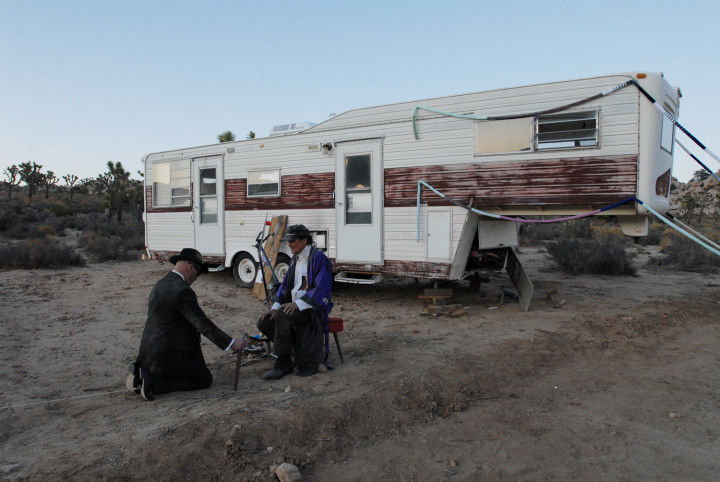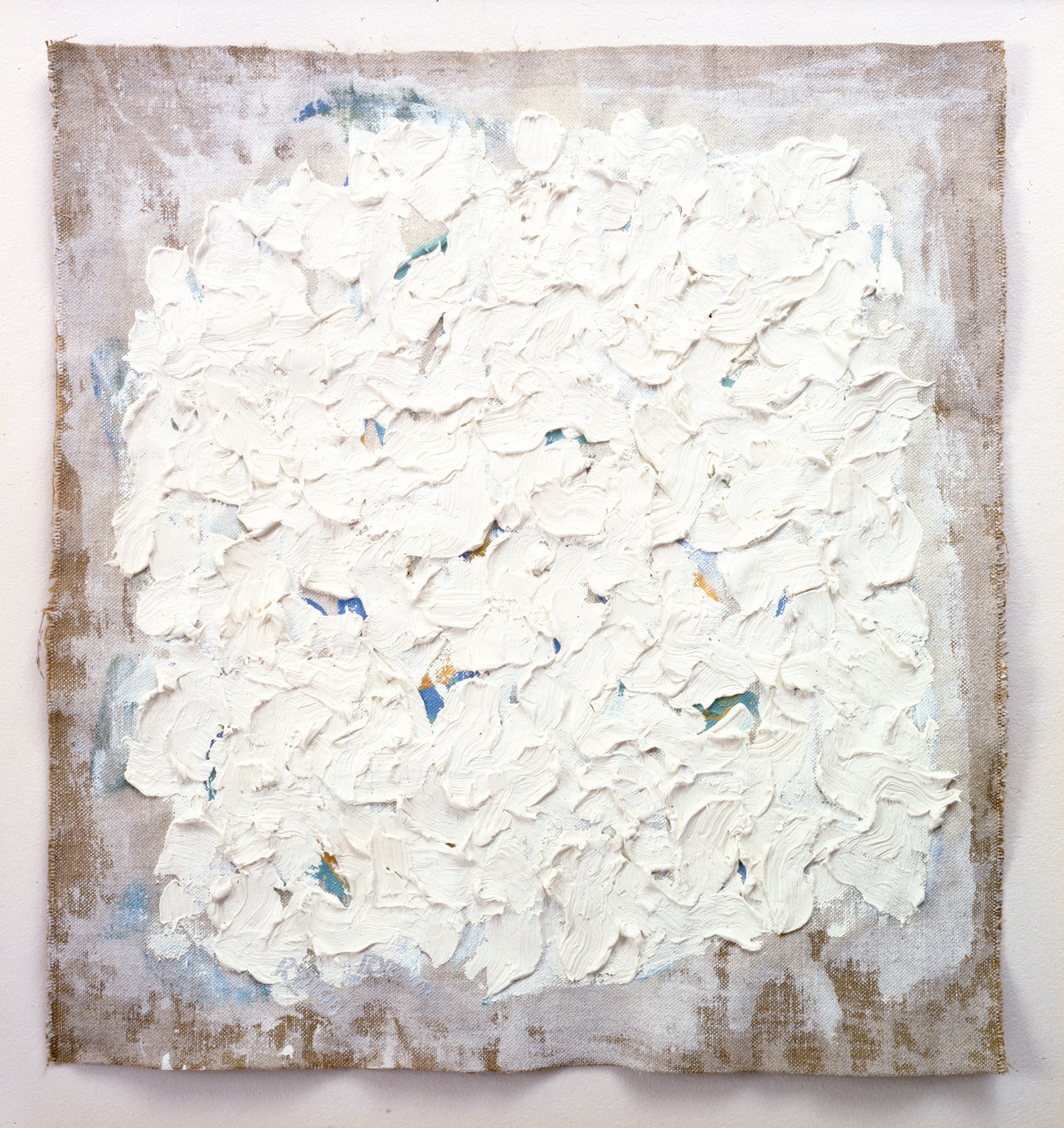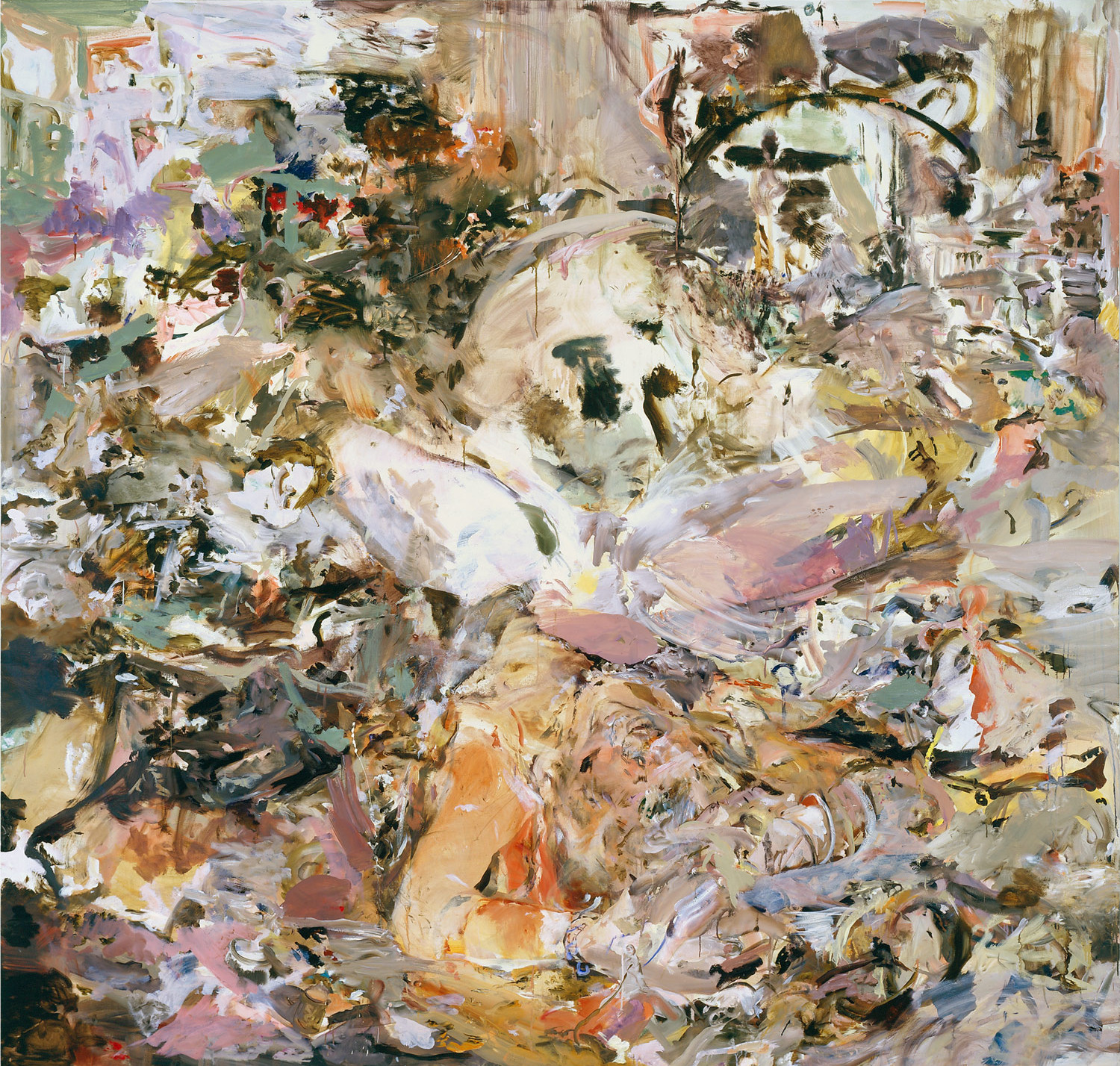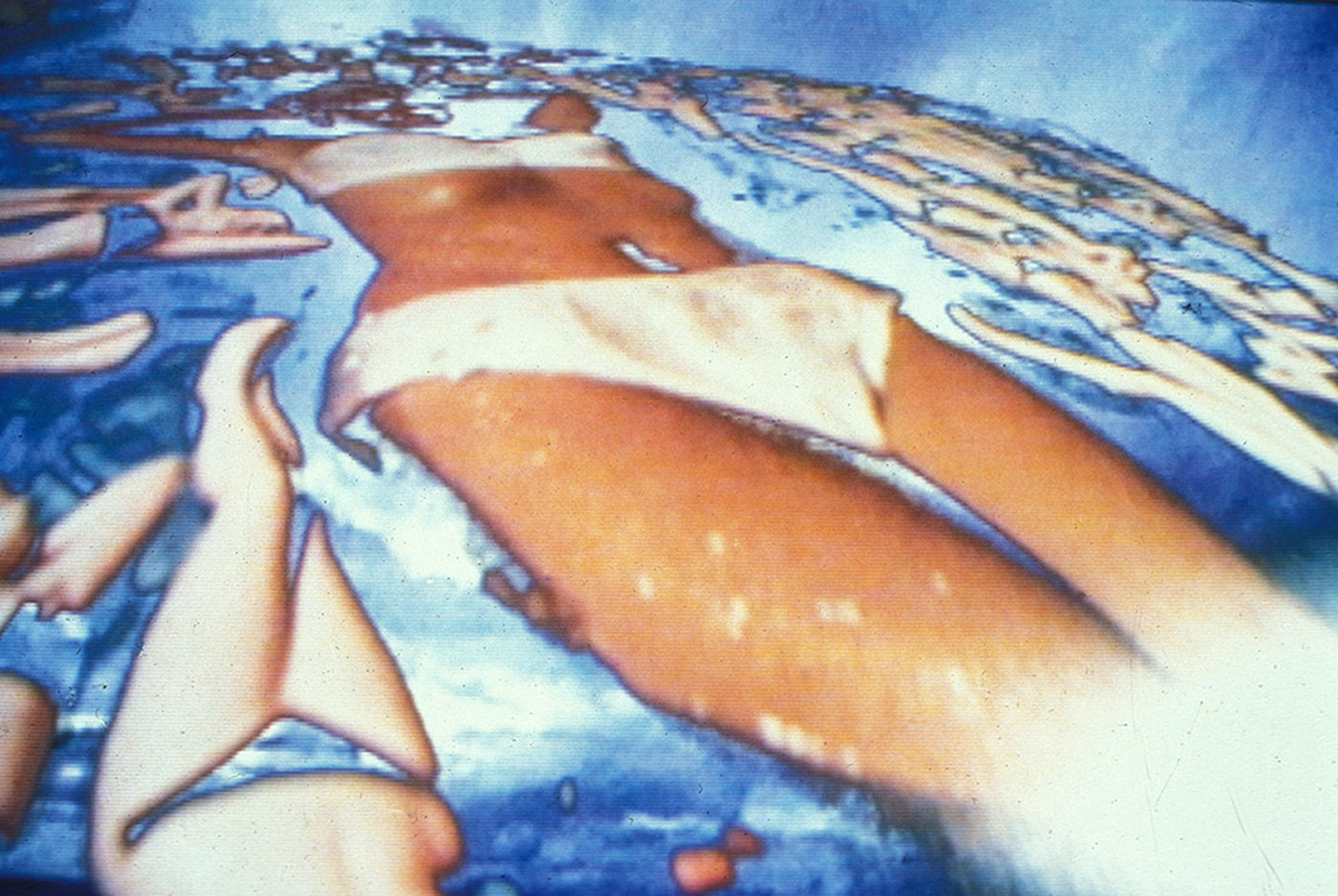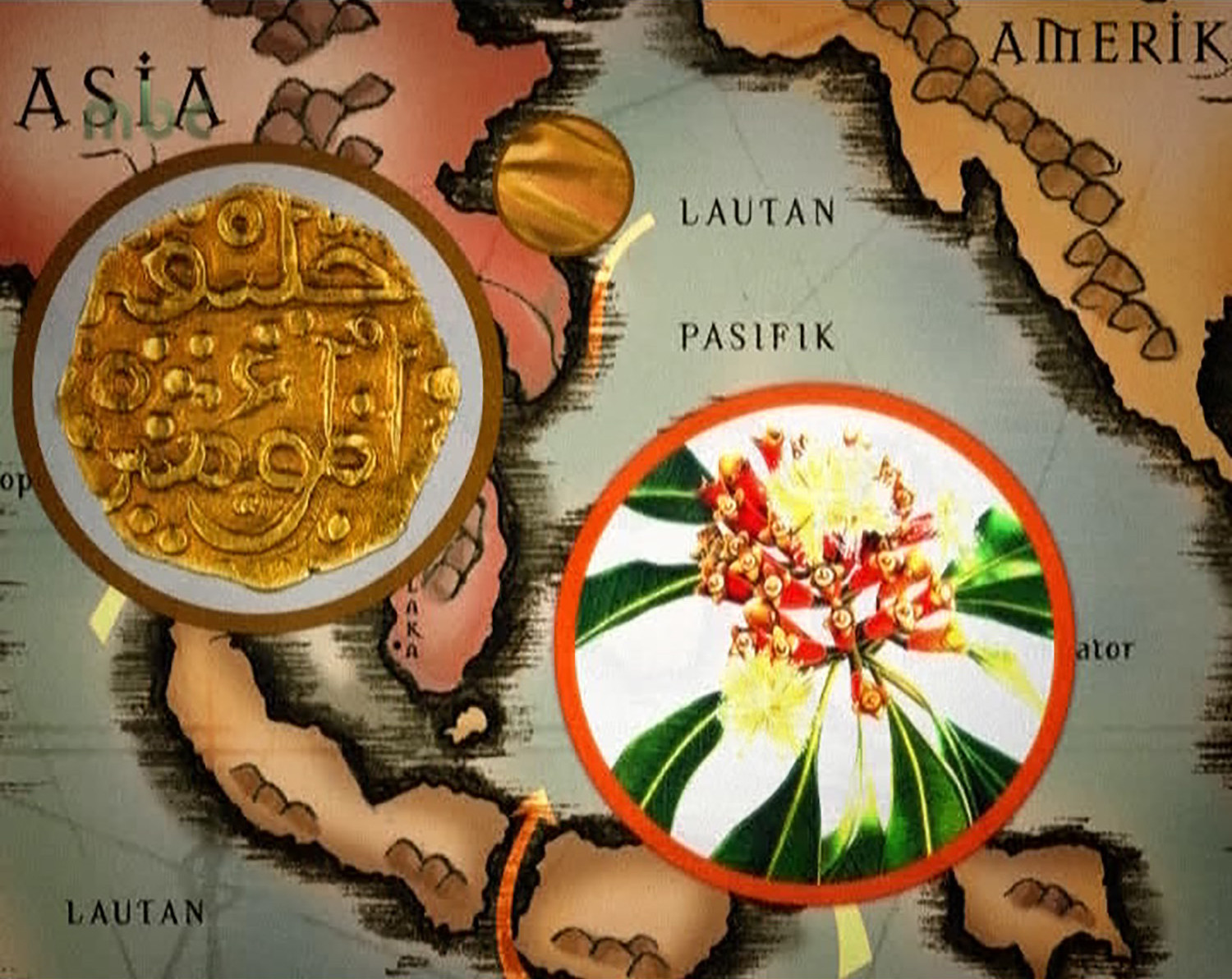
In an era that celebrates celebrities and the cult of the personality, a Martin Kippenberger retrospective comes as a reality check. The man, whose ultimate work was himself, was at the same time a punk, a prankster, an entertainer and even a curator. He was troubled by post-WWII German history but animated by the philosophy of all-is-permitted, which translated into a mix of Warhol attitude and Berlin Wall-straddling, Beuysian mind-set.
The retrospective organized by MOCA is the largest seen in the USA to date. Kippenberger lived in LA for a short time in the late ’80s, during which time he tightened relationships with many artists — as well as the curator of this show, Ann Goldstein — and invested in the restaurant “Capri.”
The show mirrors his omnivore attitude in life and in art. The 250 works (including multipart efforts) illustrate some of the crucial phases of his work in its different facets: paintings, sculptures, books, graphics, performances and photographs. Dark humor and extravagance — two of the artist’s essential tools — are emphasized throughout the exhibition.
Peter: The Russian Position, first exhibited at Max Hetzler gallery in Cologne in ’87, is Kippenberger’s first challenging object-based installation. With it, he started to explore his clutter-like display mode. This kind of accumulation was later used for other installations, including The Happy End of Franz Kafka’s “Amerika” (1994). This epic work, reconstructed at MOCA Geffen, features numerous combinations of one table and two chairs — a variation on the theme of the job interview, based on a scene in Kafka’s novel. The show is ambitious and compelling. The only flaw: the installations at MOCA Grand Avenue need more space.
Playing the role of a modern social catalyst, Ryan Trecartin’s work is the result of a collective effort by a close circle of friends.
I-Be Area was premiered about one year ago at Elizabeth Dee gallery in New York, but it’s now presented at the Hammer in the artist’s first museum solo show. In 108 minutes, it tells the story of a group of young people, a tribe living with its own codes and speaking of issues of origin, gender and personal identity. The characters’ features, costumes, makeup, props and settings together generate a new form of surrealism. Although there’s an actual script, scenes seems to emerge from automatic writing sessions, establishing fast and free associations à la Google: in a space called “Jaime’s Area” (a place at once physical, psychic and virtual), individual sequences of action lead from one room to another.
I-Be Area provokes a mixture of wonder and fatigue: almost obnoxious for its loud, strident voices, overacting and heavily processed digital images, but magical for its energy of never-ending youth, a place where everything is yet to be defined.

Martin Kersels is the essential LA artist; as a teacher at CalArts he guides numerous novices, and as an artist he embodies a generation born in the ’60s. Two concurrent shows give new perspective on his work: a survey (from 1994 until today) at the Santa Monica Museum focuses on works mostly related to the body and space. On view, beside images documenting actions like Falling, Tripping or Friends Smacking Me, there are object-machines that rotate, produce sound or mechanically move. There’s nothing high tech about them; all is simple and handcrafted.
When asked to give a lecture at the museum, Kersels came up with a one-and-a-half-hour-long show, performed on a stage that is also the installation Rikety (2007) — a platform made up of old cabinets and pieces of furniture. Like a stand-up comedian, he invited audience participation and narrated his work from his early beginnings, when he performed with the collective Shrimps, until the seminal work Pink Constellation (2001), a life-size rotating teenage girl’s bedroom. This event, rich with comical gags, perfectly summed up the spirit of his art.
At ACME — inaugurating a renovated and expanded space — are Kersels’s new works: mobile sculptures and machines, photographs and a video. All relate to the idea of excess, risk and living on the edge. The strongest work here is a series of black-and-white photos documenting Kersels’s onstage impersonation of punk idol Iggy Pop.
Next door to ACME, Marc Foxx has also expanded. Their inaugural exhibition is a solo show by LA-based artist Carter Mull. Mull moves in a narrow, highly specific area within the field of photography, examining the medium in light of the recent developments in image-making: how images are created, processed, diffused and perceived.
It’s a refined show, carefully studied; the viewer’s attention bounces back and forth among three different types of photographs: abstract works made in the dark room with an analog process; elements of figuration emerging from irregular abstract patterns; and pictures from the pages of the Los Angeles Times that have been wildly altered with Photoshop tools, resulting in dark captivating images with heavily solarized colors.
Another well-balanced show is by Lisa Lapinski at Richard Telles. The exhibition follows her summer show at MOCA, where the same types of works were unfortunately constrained in a hallway-like space.
Frets, stripes and checkered motifs are the recurrent lexicon in the “Linz Wedding Song,” including four photographs of an ornamental wall, an installation made of separate architectural elements and one of her now-classic wallpaper pieces.

These patterns recall Modernist decoration — think Bauhaus or early abstraction — and are mainly inscribed with a black-and-white logic. In Air Guitar Dave Hickey traces the difference between color and black-and-white: color is how we represent instinctively our own reality, whereas black and white implies an interpretation and an intellectualization, and ultimately deals with the idea of civilization. This is an apt interpretation of Lapinski’s chromatic scales and abstractions.
Rock ‘n’ roll and car culture return in a typically American tale, authored by German artist John Bock. At Redcat, a Lincoln lies like an open body, out of which spills a huge hank of red plastic-wrapped wires looking like organic matter. Within this setting the road-movie Palms, 2007, is being screened (produced by Redcat, L.A., and Schrin Kunstahalle, Frankfurt). Palms tells the story of chase, played by grotesque characters.
Car fetishism, rock music, genres of Hollywood cinema (thrillers, westerns, road movies) and locations (the desert, the highway, diners) make you instantly recall numerous predecessors — including Richard Prince, Quentin Tarantino, Cormac McCarthy and Matthew Barney. Yet Palms is different from all these tropes; his references to American culture are only a pretext.
Palms takes place in an alien realm regulated by unknown rules, like a funky version of Tarkovsky’s Zone. Shot in Joshua Tree, the California desert, Palms capitalizes on the sex appeal of the place. The location itself is pure cinema: as Richard Prince has shown, certain images are imprinted in our minds by layers of popular media. Bock samples this American imaginary and grafts it onto his own bizarre, whimsical, typical DIY props. The resulting admixture is an extravagant work that captivates at intervals.

